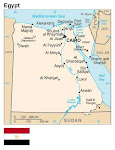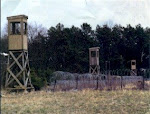 HLAING THA YAR, Myanmar-When the full force of Cyclone Nargis passed overhead, people in this one village in southwest Myanmar could do little but sit tight and pray their lightweight bamboo shacks stood up to the ferocious winds.For the most part, they did. Elsewhere, deep in the vast marshlands of the Irrawaddy delta, people were less fortunate as winds of 190 km (120 miles) per hour caused a sea surge that swept inland, killing most of the cyclone's 15,000 victims, according to the military government."No one died around here. We were very lucky," said one 18-year-old student in Hlaing Tha Yar, a village of about 10,000 people an hour's drive west of Yangon. He did not want to be named.In the village, roofs had been ripped off about one in ten of the houses, simple bamboo structures with roofs made of leaves and walls of rush matting.But in most cases, they simply shook violently and bent before the force of the blast, before springing back up when the storm passed, residents said.Further south, CNN showed footage of one village in which it said every house had been virtually destroyed.The relative absence of destruction in villages such as Hlaing Tha Yar is making it all the more difficult for the government and aid officials to work out how many people have been affected, and who is in biggest need of help.United Nations aid officials can say only that the number of homeless is in range of several hundred thousand.However, even in Hlaing Tha Yar, two km from the banks of the Yangon River, there is already a shortage of clean drinking water only three days after the cyclone. Food prices have also shot up."There's not much food," said one woman standing by a stall of pineapples. "The price of a cabbage is now 1,000 kyats, instead of 250."With no sign of help from the military government, people are having to fall back on their own strength and ingenuity to patch up their homes and lives.Saffron-robed Buddhist monks were sawing fallen trees beside the village's dirt tracks, still strewn with branches but already baked dry again by the searing heat of the tropical southeast Asian sun.The beams of roofless houses became impromptu drying racks for clothes as men balanced on bamboo poles lashing roofs back together."I was very scared, but luckily my roof was strong," said one 21-yr-old English teacher sawing up a tree trunk lying across his roof. "It will take me 3 days to repair my house."On the outskirts of Yangon, the former Burma's biggest city with a population of five million, the destruction appeared more severe, with huge trees uprooted and electricity pylons lay poleaxed beside the road.With fuel supplies also running short, cars and buses waited in lines several kilometres long to fill up with compressed natural gas.
HLAING THA YAR, Myanmar-When the full force of Cyclone Nargis passed overhead, people in this one village in southwest Myanmar could do little but sit tight and pray their lightweight bamboo shacks stood up to the ferocious winds.For the most part, they did. Elsewhere, deep in the vast marshlands of the Irrawaddy delta, people were less fortunate as winds of 190 km (120 miles) per hour caused a sea surge that swept inland, killing most of the cyclone's 15,000 victims, according to the military government."No one died around here. We were very lucky," said one 18-year-old student in Hlaing Tha Yar, a village of about 10,000 people an hour's drive west of Yangon. He did not want to be named.In the village, roofs had been ripped off about one in ten of the houses, simple bamboo structures with roofs made of leaves and walls of rush matting.But in most cases, they simply shook violently and bent before the force of the blast, before springing back up when the storm passed, residents said.Further south, CNN showed footage of one village in which it said every house had been virtually destroyed.The relative absence of destruction in villages such as Hlaing Tha Yar is making it all the more difficult for the government and aid officials to work out how many people have been affected, and who is in biggest need of help.United Nations aid officials can say only that the number of homeless is in range of several hundred thousand.However, even in Hlaing Tha Yar, two km from the banks of the Yangon River, there is already a shortage of clean drinking water only three days after the cyclone. Food prices have also shot up."There's not much food," said one woman standing by a stall of pineapples. "The price of a cabbage is now 1,000 kyats, instead of 250."With no sign of help from the military government, people are having to fall back on their own strength and ingenuity to patch up their homes and lives.Saffron-robed Buddhist monks were sawing fallen trees beside the village's dirt tracks, still strewn with branches but already baked dry again by the searing heat of the tropical southeast Asian sun.The beams of roofless houses became impromptu drying racks for clothes as men balanced on bamboo poles lashing roofs back together."I was very scared, but luckily my roof was strong," said one 21-yr-old English teacher sawing up a tree trunk lying across his roof. "It will take me 3 days to repair my house."On the outskirts of Yangon, the former Burma's biggest city with a population of five million, the destruction appeared more severe, with huge trees uprooted and electricity pylons lay poleaxed beside the road.With fuel supplies also running short, cars and buses waited in lines several kilometres long to fill up with compressed natural gas.As in the days of Noah...






















































































.bmp)

























.bmp)